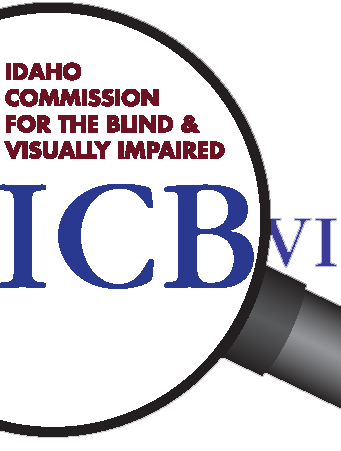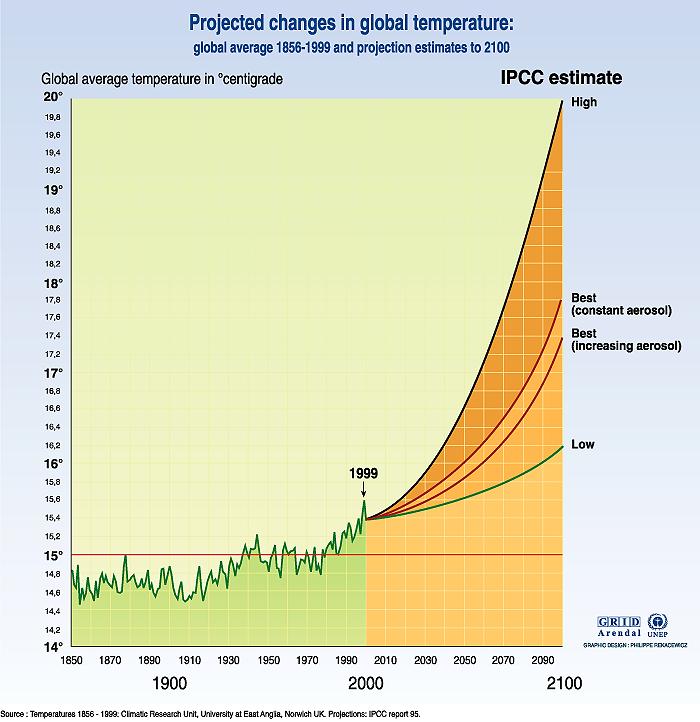q&a: the implications of climate change for australias great barrier reef (for a pdf copy of the full report, see www.wwf.org.au. f
Q&A: THE IMPLICATIONS OF CLIMATE CHANGE FOR AUSTRALIA'S GREAT BARRIER
REEF
(For a PDF copy of the full report, see www.wwf.org.au. For an easy to
navigate version on CD-Rom, contact Richard Leck, [email protected],au )
1.
What are the key findings of this report?
This report confirms the extreme risk that the world’s most diverse
marine ecosystem, coral reefs, face if the earth continues to warm. By
using a new index developed by the National Oceanic and Atmospheric
Administration (NOAA) and the Centre for Marine Studies at the
University of Queensland in Australia projections of coral reefs under
a warming world were developed.
All projections reveal that even under the best circumstances, less
than 5% of the coral populations on the Reef today will be left. The
key though is how corals fair beyond 2050. Under scenarios in which
greenhouse gases continue to build up in the atmosphere, coral
populations will be decimated to a point where recovery may have to
wait centuries. Under more responsible scenarios in which greenhouse
gas emissions are reduced rapidly and global average temperature
change stays below 2 degrees Celsius, large scale coral populations
will rebuild much quicker. This has to occur with a concerted effort
to afford reefs much greater protection.
The report also develops four scenarios for the future of the Great
Barrier Reef and the industries that depend on them, primarily tourism
and fisheries. The news is not good.
Under the worst case scenario, coral populations will collapse by 2100
and the re-establishment of coral reefs will be highly unlikely over
the following 200-500 years. Under the best case scenario, coral cover
will be dramatically reduced by 2100 but will recover over the
following century as the climate stabilizes again."
Under the best case scenario, which involves deep cuts to greenhouse
emissions, solutions remain for people and industry. Under all other
scenarios, devastating impacts are inevitable.
Tourism and fisheries appear to be the casualties of the worst-case
climate change scenarios, as reefs degrade to less appealing and less
ecological supportive ecosystems.
In the worst case scenario, by 2020 mid-shelf reefs in the Great
Barrier Reef will have half the coral they had in 1990 and will be
starting to register negative appeal to tourists. By 2040, these reefs
will no longer by dominated by corals. Algae and other less attractive
organisms will dominate.
In the best case scenario, the decline in the abundance of corals is
delayed. One of the most critical features of this scenario is that
the climate stabilizes within a short period of time, allowing
ecosystems like coral reefs to regain their prominence in our oceans.
In all scenarios, treating marine ecosystems like coral reefs
carefully becomes a central feature. This means that other stressors
on coral reefs such as over-fishing and water-borne pollutants must be
reduced to allow coral reefs any chance of surviving what is shaping
up to a be a century of stress driven by our changing climate.
The new zoning plan for the Great Barrier Reef, which establishes a
representative network of no-take zones, and the new Reef Water
Quality Protection Plan, are two such examples of the types of changes
that must occur as we move through this difficult period. While these
steps need to be applauded as measures to increase the Reef’s ability
to bounce back under stress, the Australian government needs to
develop and implement an action plan to achieve rapid cuts in
greenhouse gases.
The worse case scenario means that climate will continue to change for
centuries and the recovery of the earth’s ecosystems may take
centuries if not millennia.
Under the best case scenario, greenhouse gas emissions are reduced
rapidly and the global average temperature stabilizes at no more than
2 degrees Celsius above pre-industrial levels.
Under the worse case scenario, greenhouse gases continue to build up
in the atmosphere and the global average temperature rises 3 degrees
above pre-industrial levels. The temperature will continue to move
upwards for many hundreds of years.
To ensure the best case scenario, developed countries such as
Australia will need to have reduced their emissions by 80% (based on
1990 levels) by 2050. By 2100, emissions will need to be close to
zero.
2) What will happen to the Great Barrier Reef at 2 degrees Celsius
temperature increase?
The report looks at a number of scientific scenarios, which are based
on the IPCC family of scenarios. The B1 scenario is based on a global
average temperature rise of just under 2 degrees Celsius by 2100.
The following table presents projections based on the best case B1
scenario for the Great Barrier Reef:
Year after which reefs have half the coral they had in 1990 and are
starting register negative appeal to tourists.
Year by which reefs are no longer coral dominated.
B1
Inshore
2035
2070
Mid-shelf reefs
2030
2060
Offshore reefs
2035
2070
4) How will climate change affect the economy around the Great Barrier
Reef?
The economic story focuses on the largest and most reef-dependent
industry, tourism. Not surprisingly, tourism is vulnerable despite its
well-known adaptability, and that this will affect the regions along
the Reef. Significantly, all four scenarios start about the same way
over the next 20-30 years because past increases in CO2 levels are
irreversible in their impact on global warming.
However, depending on the extent to which the world starts now to
reverse the technologies that cause the worst increases in CO2, trends
beyond 20-30 years will be very different, ranging from continued
rises in one scenario to significantly lowered levels in others. The
economic loss, while considerable whichever scenario story prevails,
will be significantly lower in the long term under the ecologically
responsible worlds depicted by our scenarios B1 and B2, especially the
latter assuming that it merges eventually into global policies
reinforced by local community efforts.
A1
==
A1 is driven by strong economic growth and strong international
institutions. This economic scenario is associated with the severe A1
family of scientific scenarios. This scenario has the second highest
direct losses to tourism and fisheries plus flow-on effects for the
regional economies along the GBR coastline.
In the global economic growth-driven A1 scenario, where environmental
considerations take a back seat at least over the next two decades,
the total accumulated estimated loss (from 2001 to 2020) to local
Queensland communities along the GBR coastline by 2020 amounts to
$AUD5.6 billion.
A2
==
A2 is also driven by strong economic growth but the world is divided
into separate geopolitical trading blocks. This is the worst case
socio-economic scenario, and is associated with the severe A2 family
of scientific scenarios. This economic scenario has the highest direct
losses to tourism and fisheries plus flow-on effects for the regional
economies along the GBR coastline.
The A2 scenario world represents a worst case to be vigorously avoided
for the regions along the Reef. Here the total estimated loss to local
Queensland communities amounts to $AUD8.0 billion, the highest
projected loss of the four scenarios.
B1
==
In the B1 economic scenario, global environmental cooperation takes
precedence over economic growth. This scenario is associated with the
most environmentally benign family of scientific scenarios – B1 (the
only set of IPCC scenarios that stay below 2 degrees warming). This
economic scenario has the second lowest direct losses to tourism and
fisheries plus flow-on effects for the regional economies along the
GBR coastline, of the four scenarios.
The total estimated loss under scenario B1 is $AUD4.5 billion up to
2020.
B2
==
The B2 economic scenario depicts a world with strong community drivers
rather than global environment cooperation. This scenario is
associated with the B2 family of scientific scenarios – that are above
2 degrees Celsius increase but not as severe as A1 and A2. This
economic scenario has the lowest direct losses to tourism and
fisheries plus flow-on effects for the regional economies along the
GBR coastline.
The fourth scenario, B2, adds a strong local community input to the
general environmental priorities adopted in B1. Up to 2020, it shows
the lowest loss of $AUD3.5 billion,
Best Case
=========
To capitalise on both local and global drivers in order to build a
best case scenario for both the GBR and its dependent industries, the
B2 scenario is assume to merge into the more globally oriented
scenario towards the middle of the century.
6) What are WWF’s key recommendations to address this problem?
Global temperature rise must be kept within 2 degrees Celsius of the
pre-industrial greenhouse gas concentrations in the long term. We must
re-stabilize the climate as soon as is possible. The report shows once
more that this is essential if we want to keep the world's largest
living organism – the Great Barrier Reef.
In order to do this, WWF Australia is urging the Australian government
to achieve deep cuts in CO2 emissions, with the long term aim of a CO2
neutral future - and this includes ratifying the Kyoto Protocol.
WWF has made clear that one of the most important steps in fighting
climate change is to switch electricity production from carbon
intensive fuels such as coal to clean energy, such as wind, solar and
biomass, and to highest efficiency. The power sector is the biggest
CO2 emitter, responsible for 37% greenhouse gas emissions. According
to WWF studies, industrialised countries can achieve a CO2 neutral
power sector by mid of this century. Developing countries will need
longer but should have made a considerable move from coal to clean by
mid 21st century. (See WWF’s Power Switch Initiative:
www.panda.org/powerswitch)
For further information:
Imogen Zethoven, WWF-Australia Great Barrier Reef Campaign,
[email protected]
Anna Reynolds, WWF-Australia Climate Change Programme,
[email protected]
Martin Hiller, WWF Climate Change Programme, [email protected]
 5 PRONUNCIAMIENTO N° 12482013DSU ENTIDAD PROGRAMA SUBSECTORIAL DE IRRIGACIONES
5 PRONUNCIAMIENTO N° 12482013DSU ENTIDAD PROGRAMA SUBSECTORIAL DE IRRIGACIONES PERFORMANCE AND AUDIT PANEL ANNUAL REPORT 20042005 MEMBERSHIP COUNCILLORS
PERFORMANCE AND AUDIT PANEL ANNUAL REPORT 20042005 MEMBERSHIP COUNCILLORS Programa_Catanzaro1
Programa_Catanzaro1 GUIDE TO INDEPENDENCE TABLE OF CONTENTS SECTION 1MAGNIFICATION SECTION
GUIDE TO INDEPENDENCE TABLE OF CONTENTS SECTION 1MAGNIFICATION SECTION TECHNICAL GUIDE TO CLEAN DEVELOPMENT MECHANISM IN SRI LANKA
TECHNICAL GUIDE TO CLEAN DEVELOPMENT MECHANISM IN SRI LANKA NOMOR KEPADA LAMPIRAN YTH KEPALA DINAS PENANAMAN
NOMOR KEPADA LAMPIRAN YTH KEPALA DINAS PENANAMAN MEDIA RELEASE EYE AND EAR CELEBRATES AUSTRALIAS OLDEST COCHLEAR
MEDIA RELEASE EYE AND EAR CELEBRATES AUSTRALIAS OLDEST COCHLEAR MOVIMIENTO RECTILÍNEO Y UNIFORME IES JUAN A SUANZES AVILÉS
MOVIMIENTO RECTILÍNEO Y UNIFORME IES JUAN A SUANZES AVILÉS FUERZAS ENTRE CARGAS CURSO 4° MEDIO 1 ) AL
FUERZAS ENTRE CARGAS CURSO 4° MEDIO 1 ) AL ZAŁĄCZNIK NR 9 DO UMOWY OPERACYJNEJ NR [] []
ZAŁĄCZNIK NR 9 DO UMOWY OPERACYJNEJ NR [] [] HH_FT_002_001
HH_FT_002_001 ABSTRAK LILIK MAULINA 2010 TEMBANG SEBAGAI SARANA MEMBUKA PELAJARAN
ABSTRAK LILIK MAULINA 2010 TEMBANG SEBAGAI SARANA MEMBUKA PELAJARAN